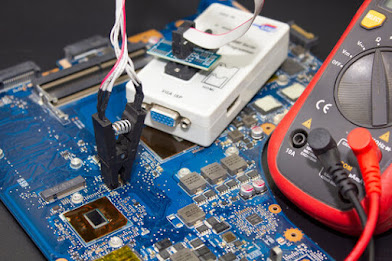Router vs Switch: Must Know Differences
What is a Router?
Routers are computer networking devices that serve two primary functions: (1) create and maintain a local area network and (2) manage the data entering and leaving the network as well as data moving inside of the network.
It also helps you to handle multiple networks and routes network traffic between them.
In your home network, your router has one connection to the Internet and one connection to your private local network. Moreover, many routers also contain built-in switches that allow you to connect multiple wired devices.
In this tutorial, you will learn:
- What is a Router?
- What is a Switch?
- How Router Works?
- How Switch work?
- Difference between Router and Switch
- Applications of Router
- Applications of Switches
- Advantages of Router
- Advantages of Switch
- Disadvantages of Router
- Disadvantages of Switch

What is a Switch?
A network switch is a computer networking device which connects various devices together on a single computer network. It may also be used to route information in the form of electronic data sent over networks. Since the process of linking network segments is also called bridging, switches are usually referred to as bridging devices.

KEY DIFFERENCES
- Routers operate at Layer 3 (Network) of the OSI model whereas Network switches operate at layer two (Data Link Layer) of the OSI model.
- Router store IP address in the routing table whereas Switch store MAC address in a lookup table
- In Router, every port has its own broadcast domain, and the switch has one broadcast domain except VLAN implemented.
- Routers can work within both wired and wireless network situations on the other hand, switches are restricted to wired network connections.
- Router will offer NAT, NetFlow, and QoS Services while Switch will offer none of these services.
- In various types of network environments (MAN/ WAN), the router works faster whereas Switch is faster than a Router in a LAN environment.
How Router Works?
A router connects multiple networks and tracks network traffic between them. It has one connection to the internet and one connection to your private local network.
Moreover, many routers contain built-in switches that allow you to connect multiple wired devices. Many routers also contain wireless radios that allows you to connect Wi-Fi devices.
How Switch work?
A network switch is also called bridging hub, switching, or MAC bridge. Switches devices use MAC addresses to forward data to the right destination. Operating system at the data link layer uses packet switching to receive, process, and forward data.
A switch offers support to handle the data and knows the particular addresses to send the message. It can decide which computer is the message intended for and send the message directly to the right computer. The efficiency of the switch can be improved by providing a faster network speed.
Difference between Router and Switch
Here are some important differences between the Router and Switch:

| Router | Switch |
|---|---|
| Routers operate at Layer 3 (Network) of the OSI model. | Network switches operate at layer two (Data Link Layer) of the OSI model. |
| Router will offer NAT, NetFlow and QoS Services | Switch will not offer such services. |
| Store IP address in the routing table and maintain an address on its own. | Store MAC address in a lookup table and maintain an address on its own. However, Switch can learn the MAC address. |
| Networking device 2/4/8 ports. | A switch is a multi-port bridge. 24/48 ports. |
| Less Duplex | In Full Duplex, So, no Collision occurs. |
| The speed limit is 1-10 Mbps for wireless and 100 Mbps for wired connection. | The speed limit for the switch is 10/100Mbps. |
| Helps users to take the faster routing decision | Likely to take a more complicated routing decision |
| The router can perform NAT | Switches can’t perform NAT |
| In various types of network environments (MAN/ WAN), the router works faster compares to Switch. | In a LAN environment, a switch is faster than Router. |
| In Router, every port has its own broadcast domain. | The switch has one broadcast domain except VLAN implemented. |
| Router operations revolve around IP Addresses. | Switches work with MAC addresses as it operates within the confines of a single network. |
| Routers can work within both wired and wireless network situations. | Switches are restricted to wired network connections. |
Applications of Router
Here, are important applications of Router:
- Creates a local area network(LAN).
- It allows you to split your internet connection to all of your devices.
- Connect different media/devices with each other
- Run a firewall.
- The routers determine where to send information from one computer to another
- Packet Forwarding, Switching, and filtering.
- Router also makes sure that information does make it to the intended destination.
- Connect to a VPN
Applications of Switches
Some applications of switches are:
- A switch helps you to manage the flow of data across the network.
- Medium to large-sized LANs containing a number of linked managed switches.
- Switches are widely used in SOHO(Small Office/Home Office) applications. SOHO mostly uses a single switch to access the various broadband services.
- It is used in a computer network to connect the devices together physically.
- A switch can transfer data to any of the other devices, either using half-duplex mode or full-duplex mode.
Advantages of Router
Here, are some pros/benefits of Router:
- It helps to share a network connection with multiple machines that increases productivity.
- A router allows delivering the packets of data in an organized way, which helps to lower the data load.
- Router offers a steady and reliable connection between network hosts.
- Routers make use of the alternative parts in case the main part fails to transfer data packets.
Advantages of Switch
Here, are pros/benefits of using Switch
- It helps you to reduce the number of broadcast domains.
- Supports VLAN’s that can help in Logical segmentation of ports
- Switches can make use of CAM table for Port to MAC mapping
Disadvantages of Router
Here, are cons/drawback of Router:
- Connections can become slow when multiple computers are using a network. This situation is described as a connection wait.
- A router helps multiple computers to share the same network, which may lower the speed.
Disadvantages of Switch
Here, are cons/drawbacks of using Switch:
- Not as good as a router for limiting broadcasts
- Communication between VLANs requires inter VLAN routing, but these days, there are many multilayer switches available in the market.
- Handling multicast packets that requires quite a bit of configuration & proper designing.
- It helps to reduce the number of broadcast domains.






Comments
Post a Comment